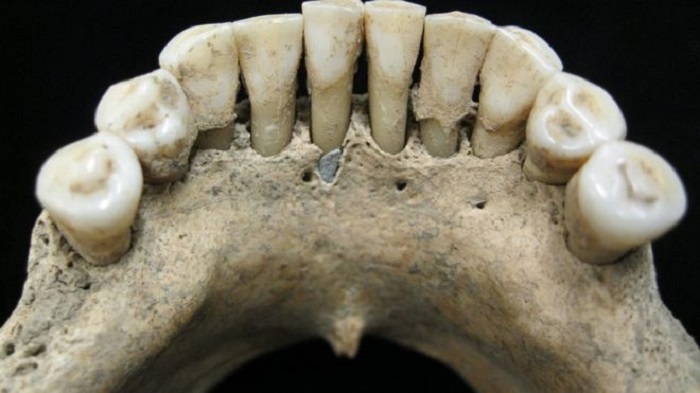
London, Scientists have found microscopic crystals of a rare and precious Middle Eastern gemstone on the teeth of a medieval German nun, suggesting the early involvement of women in manuscript production.
The team from the Max Planck Institute, Germany, identified “ultramarine” — a brilliant blue pigment in the form of powder-embedded within the dental calculus of a middle-aged woman buried in a 9th- to 14th-century church-monastery complex at Dalheim, Germany.
Rare and as expensive as gold, the ultramarine pigment produced from lapis lazuli stone was mined only in Afghanistan and transformed the European colour palette.
“The discovery of lapis lazuli pigment preserved in the dental calculus of a religious woman in Germany radiocarbon-dated to the 11th or early 12th century,” said Christina Warinner from the Institute.
“The early use of this pigment by a religious woman challenges widespread assumptions about its limited availability in medieval Europe and the gendered production of illuminated texts,” Warinner stated in the paper published in the journal Science Advances.
The team had initially been investigating health and diets in the Middle Ages. They analysed dental calculus — essentially dental plaque that has become fossilised on teeth — of corpses at a medieval monastery in Dalheim, Germany, the BBC reported.
When they examined the teeth of one subject, called B78, they found hundreds of tiny blue particles.
Radiocarbon dating revealed that the woman had lived between 997 and 1162AD and was between 45-60 years old when she died.
“Dental calculus is really cool, it is the only part of your body that fossilises while you are still alive,” Warriner was quoted as saying to the BBC News.
“During this process it incorporates all sorts of debris from your life, so bits of food become trapped, it ends up being a bit of a time capsule of your life.
“We found starch granules and pollen but what we also saw was this bright, bright blue – and not just one or two little flecks of mineral, but hundreds of them. We had never seen that before,” Warriner noted.
Based on the distribution of the pigment in her mouth, the team proposed that the women was most likely a scribe or book painter who engaged in the production of illuminated manuscripts, or she was employed in the preparation of artist materials for herself or other scribes.
She could have also consumed lapis lazuli in the context of lapidary medicine, or performed emotive devotional osculation of illuminated books produced by others.
The discovery indicates that women were playing a far more significant role in the writing and illustration of manuscripts at this time than has previously been recognised.








